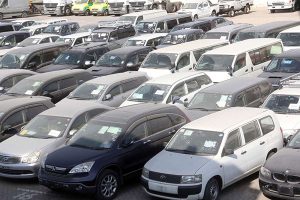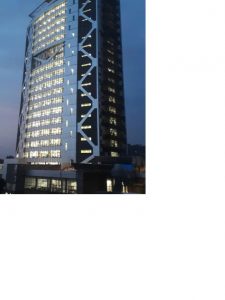
#OutToLunch: High temperatures and what districts could learn from Buganda
By Denis Jjuuko Kampala used to be known as the city of seven hills but that was long ago. As the city expanded, so were the hills. If you get a chance to stand at the top of some of these hills, you will see many more hills in now what is considered the greater Kampala metropolitan area. Many people are increasingly settling onto these hills. It can be spectacular and probably a future source of tourism revenue for enterprising business people. All they need is a good high-rise structure on which telescopes could be mounted for people to see what Kampala has got to offer. The problem though is that some of these hills may end up embarrassing us. Take the example of a hill that you face when driving from Masaka to Kampala. Around Maya, you will face the Nsangi hill, full of houses that explain our lack of proper planning. One house faces this side, another faces the other side. One is multi-floors and another is the size of a poor man’s single room hut. But they all have one thing in common— a lack of trees. At least the original seven hills that formed Kampala have lots of trees. The ‘new’ ones? Something needs to be done. They were all originally well treed. Then land entrepreneurs showed up with graders. Cut down the trees and subdivided the hills into plots measuring 50×100 feet in size or less. They heavily advertised them as “organised” housing estates. Kampala’s middle class rushed to acquire them and started competing on who puts up the ugliest structure. Some built houses almost the size of the entire plot leaving absolutely no space to plant a tree or even some grass. The hills have ended up of what one once called a concrete jungle! Outside Kampala, forests were cut down for timber and charcoal and we didn’t think much of replacing the trees. Certainly, we had never heard of sustainable logging. Deplete everything and blame some faceless mafia. The trick works on the masses. That perhaps explains the high temperatures we are experiencing in Kampala and across the country today. If you drive through the countryside where the significant majority of the population depends on rainfed agriculture, a hunger crisis looms even though this is expected to be the dry season. Although harsh weather events or even changes in the climate that affect Ugandans can’t be entirely blamable on Ugandans, there is much that we can do ourselves. One of the easiest things to do is planting trees, many of which wouldn’t require much effort to grow. Perhaps the tree should be one that offers benefits to people regularly such as fruit trees from which income could be derived. The people at the helm of Buganda Kingdom understood this and initiated a tree planting plan at every betrothment (kwanjula) and last funeral rites ceremonies and this could further be escalated by the district local governments. At least in urban areas, everyone who builds a house is supposed to have an approved architectural plan. Urban planners should ensure that each plan presented for approval has trees as part of it. And before occupation permits are issued, there must be trees already planted. When urban authorities visit rental properties to determine and/or collect property service tax, they should check whether the trees exist and if not, a penalty could be administered. The Uganda Revenue Authority could do the same when collecting rental income tax. Where commercial building in the city can’t have trees, they can commit to maintaining trees on the streets on which they are located or a nearby public park. Failure to do so, they would receive a penalty. Real estate dealers who subdivide land into the so-called organised housing estates would be required to plant trees along the main roads within that estate as part of their license and this could be done well before the land is sold. No trees planted; no land titles issued. The land registry would have to work with the district local governments on this. Those who buy the land would be required not to temper with the trees. They can only maintain them. Enforceable penalties for those who fail to adhere to this. Of course, for this to work, the districts and urban authorities would have to be intentional with supervision to ensure compliance. It should not be too difficult to enforce. The writer is a communication and visibility consultant. djjuuko@gmail.com


